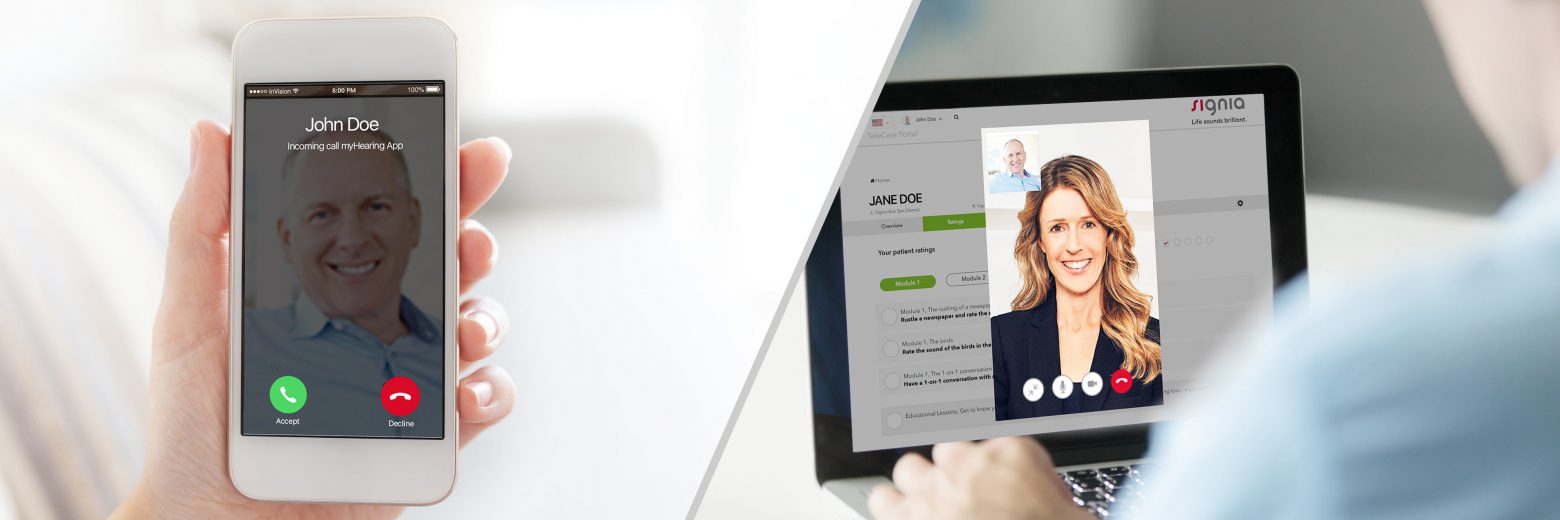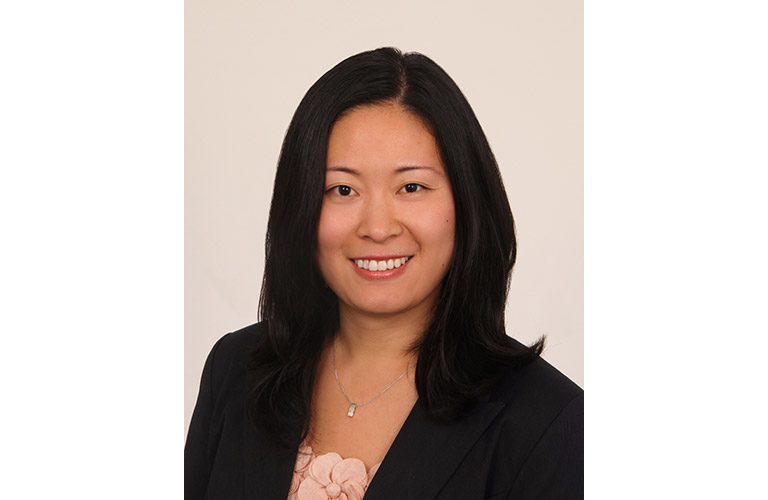Full Live remote Tuning
Rebecca Herbig AuD

Signia TeleCare is the world’s first telehealth application which connects hearing aid wearers with their hearing care professional (HCP). By enabling remote consultations and hearing aid adjustments during the critical home trial period and beyond, TeleCare helps patients stay satisfied with their new hearing aids even after they leave the office, and helps HCPs save time and differentiate their practice.
TeleCare consists of two parts:
Since market launch in October 2016, more than 5,000 hearing care professionals in 32 countries have signed up to TeleCare, making it by far the most successful telehealth application in hearing care.
TeleCare provides benefit for both patients and hearing care professionals. Benefits for the patient include:
[1] Video calls not available in all markets.

For the hearing care professional, benefits include:

Since the introduction of TeleCare, anonymous analytics data shows that there have been more than 150,000 patient-HCP interactions (ie: chats, lessons, ratings) around the world, including 5,000 remote tuning interactions. With this large amount of data available, valuable insights can be deduced to help HCPs improve their service and business success. For example, it was found that the two most significant indicators for a potential hearing aid return are patient average satisfaction in week 1 of the trial, and if the patient completed any hearing activities in the app in week 4.
Patient average satisfaction values are calculated by assigning the five rating options to values 1 to 5 so that Very Unsatisfied = 1, Unsatisfied = 2, Neutral = 3, Satisfied = 4, and Very Satisfied = 5. For example, if in the first week, a patient gave a Satisfied rating one day, and a Very Satisfied rating on another day, his average satisfaction value that week is calculated as 4.5.
Analyzing patient interactions showed that those who have an average satisfaction rating in week 1 of at least a 3.5, and performed at least one activity in week 4 have an 8% probability of returning the hearing aids, whereas those patients whose week 1 rating is worse than 3.5, and did not complete an activity in week 4 have a significantly higher probability of returning their hearing aids at 49%.
In other words, TeleCare helps HCPs identify patients who are at risk of rejecting amplification, and gives them an early opportunity to intervene before the hearing aids are returned. This finding also confirms that higher patient engagement leads to hearing aid adoption and patient satisfaction.
TeleCare 3.0 turns the patient’s smartphone into a hearing aid programming interface, and virtually all programming possibilities of Connexx can be carried out remotely. Professional-patient interactions can take place via video calls while hearing aid fine tuning is accomplished via the integration of Connexx and the TeleCare Portal.
Such “virtual home visits” enabled by TeleCare 3.0 eliminate the need for patients to physically visit the HCP after the first fit in the office. People who live in rural or remote regions, those with limited physical mobility, or those without access to convenient transportation will especially appreciate such a benefit.
Remote follow-up fittings also allow HCPs to provide fittings better customized to the patient’s real-life listening environments. Appointments can take place during the most relevant situations in the patient’s lives, such as in the living room with the TV on, or in the car while the spouse is driving, and hearing aid settings can be fine-tuned in real time based on patient feedback as well as acoustic information collected by the hearing aids.
MarkeTrak 9 has shown that 27 percent of patients who were recommended hearing aids chose not to keep them after the trial period. Yet for those who ultimately did purchase hearing aids, the second and fourth most commonly cited reasons were, “Trusted the hearing care professional” and “The trial clearly showed hearing aids could improve hearing” respectively. These results clearly illustrate the importance of the HCP’s involvement and accessibility in the trial process. Signia TeleCare serves as the platform to make HCPs both more involved and more accessible to patients during the trial period and well beyond.
TeleCare 3.0 is generally compatible with the entire Signia portfolio of hearing aids. In fact, HCPs can use TeleCare with all their patients, regardless of the make or model of the hearing aid fitted. However, note that the remote adjustment functionality and hearing aid use and care guides are only applicable when used with Signia hearing aids. Full live remote tuning is only compatible with Signia Nx™ Bluetooth hearing aids.

Rebecca Herbig, Au.D., is a Clinical Education Specialist for Sivantos USA. Since 2008, Dr. Herbig has been responsible for various aspects of scientific marketing, both globally and specific to the US market. Prior to joining Sivantos, she worked as a clinical audiologist in northern Virginia. Rebecca received her doctorate in Audiology from Gallaudet University in Washington DC.